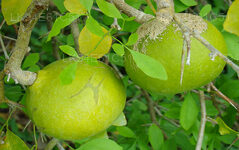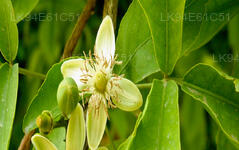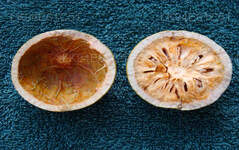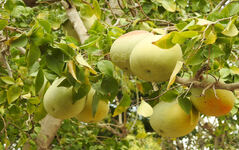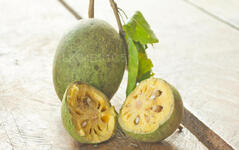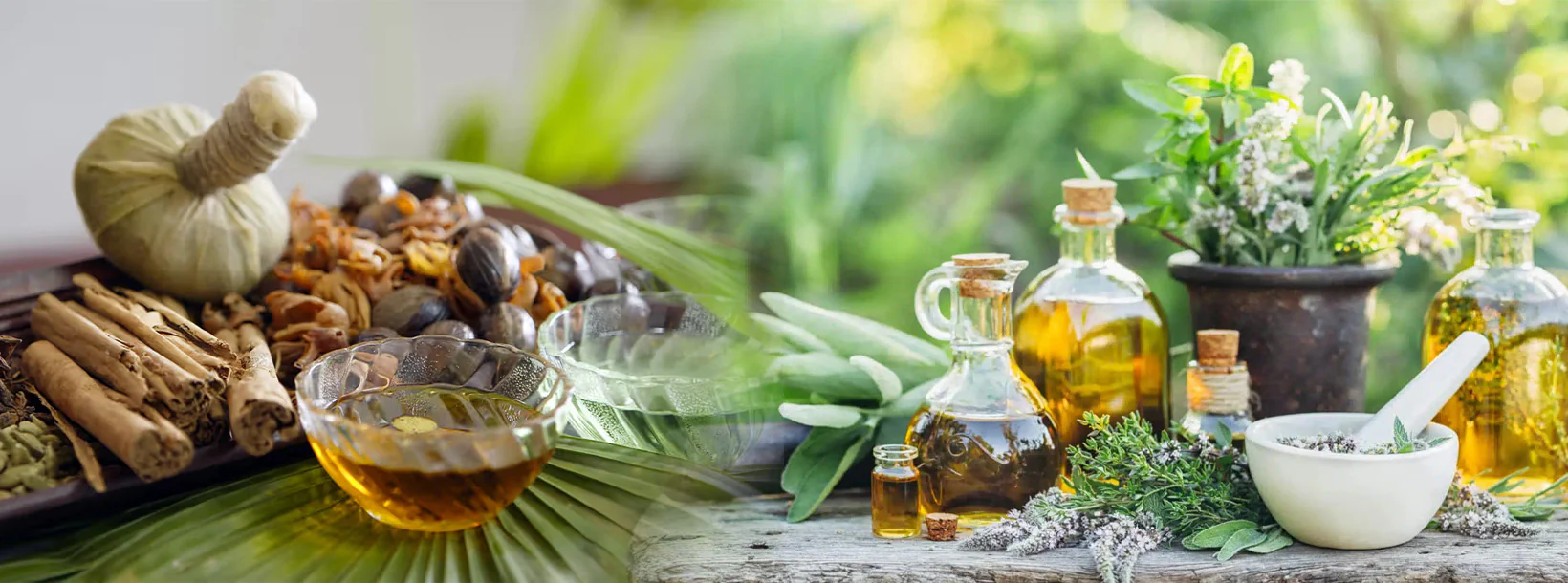
Ayurvedic Medicinal Plants
Sri Lanka's Ayurvedic tradition features a rich variety of medicinal plants used for centuries. Sri Lanka has a rich tradition of Ayurvedic medicine, drawing on its indigenous knowledge and a variety of medicinal plants. Here are some notable Ayurvedic medicinal plants found in Sri Lanka:
Aegle marmelos (බෙලි)
Aegle marmelos; Beli is a large tree with fruit-shell containing a yellow sweet pulp up to 13 m tall with slender drooping branches and rather open, irregular crown. Each of its part has a different use and different taste Flowers and tender leaves are used to make herbal tea.
Curativ Value Of Beli Tree
The fresh flower of the Beli tree (Aegle narmelos) is bound over the eye in Ophthalmia. An infusion of beli flower clears the sediment collected in the kidney. A hot poultice of the leaves can be applied to the eye in Ophthalmia.
A hot poultice of the beli leaves is applied on the head when in a delirium. The Same poultice is applied on the chest in acute bronchitis. The roots and the fruits are more commonly used in medicine. Beli root is on one of the ingredients in the DASAMUL (Ten medicine) decoction. The root bark is regarded as a corrector of the imbalance of water, and is prescribed as a decoction for continuous fever, melancholia and palpitation of the heart.
Both ripe and unripe beli fruits are used in medicine. The unripe or half ripe fruit is an astringent and aids to digestion. It is used in dysentery and in diarrhea. It is particularly useful in chronic diarrhea and in dysentery in children. It is a very effective remedy for irritation of the alimentary canal. As traditional medicine the half ripe fruit along with roasted rice is given for bleed in hemorrhoids. The fresh half ripe fruit can be sliced and dried in the sun. These are powdered and poured Like tea and taken every morning and evening as a drink in the case of bleeding piles. The ripe fruit is aromatic, cooling and laxative. The pulp of the half ripe fruit dried in the sun and powdered can be given with treacle for any kind of bleeding from anus. The ripe fruit is edible and is useful both in constipation, diarrhea and dyspepsia. The sherbet of the ripe fruit is a very cooling drink.
-

Ankenda
Acronychia pedunculata -

Beli
Aegle marmelos -

Bakmi
Nauclea orientalis -

Bangwel-geta
Coscinium fenestratum -

Bukinda /Walkinda
Tinospora malabarica -

Bu- kobbe
Allophylus cobbe -

Dodan –kaha
Memecylon capitellatum -

Diyamitta
Cissampelos pareira -

Embul dodan
Citrus aurantium -

Gas nidikumba
Biophytun reinward -

Hintambala
Carmona microphylla -

Goraka
Garcinia cambogia -

Karapincha
Murraya koenigii -

Keppetiya
Croton laccifer -

Kohomba
Azadirachta indica -

Kotikan-bevila
Sida alba -

Kudumiris (Forest paper)
Toddlia asiatica -

Kurundu
Cinnamomum zeylanicum -

Mahakaramba
Carissa carandas -

Muna mal
Mimusops elengi -

Nelli
Phyltanthus emblica -

Puwak
Areca catechu -

Rath mal
Ixora coccinea -

Eepatta / Ruk - anguna
Alangium salviifolium -

Siyambala
Tamarindus indica -

Walangasal / Wal-embilla
Embelia ribes -

Wal Karapincha
Micromelum ceylanicum -

Welangiriya
Paramignya monophylla
Ayurvedic and Herbal
-
Siddhalepa Ayurveda kruidenbalsem
Normale prijs Vanaf €0,95 EURNormale prijsEenheidsprijs / per -
Lakpura gedehydrateerde zuurzak (Guanabana, Graviola, Guyabano) Bladeren
Normale prijs Vanaf €2,95 EURNormale prijsEenheidsprijs / per -
Link Swastha Thriphala (30 tabletten)
Normale prijs Vanaf €1,95 EURNormale prijsEenheidsprijs / per -
Sethsuwa Pranajeewa Miracle Oil
Normale prijs Vanaf €2,95 EURNormale prijsEenheidsprijs / per

